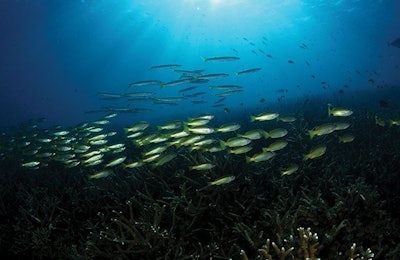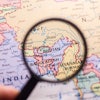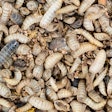
Climate change, overfishing for fishmeal have East and South China Seas on track for collapse
Climate change, coupled with overfishing driven by growing demand for fishmeal, could collapse fish populations in the East and South China Seas — potentially putting increased pressure on already-tight fishmeal markets.
Together, catches from both of these fisheries generated US$22.8 billion in value in 2018, with a growing proportion of the regions’ earnings tied to the production of fishmeal, according to a report by the ADM Capital Foundation in Hong Kong. But if current trends continue, the amount of fish available for the production of fishmeal in Southeast Asia could decrease dramatically.
The South China Sea could lose up to 6.4 million metric tons of fish biomass, worth US$11.4 billion in revenues to fishers, by 2100 if climate change is unabated and overfishing continues to increase, according to the report. The East China Sea, in better condition than the South, could see an increase in fish biomass by 2100 — but only if fishing is brought within sustainable limits.
“One of the key recommendations that we have in terms of addressing feed-grade fishing is for the industry to start thinking now about alternative protein sources, and start moving away from a reliance on fish-based feed products,” said Ashley Bang, a data scientist at the ADM Capital Foundation and one of the authors on the report.
Some alternatives such as insect meal and algae oil are already commercially viable, according to Kevin M. Fitzsimmons, who studies global fisheries as a professor of environmental science at the University of Arizona. However, the relatively high price of these ingredients has prevented them from supplanting fishmeal and fish oil as feed ingredients. Instead, new alternatives have mainly allowed the aquaculture industry to expand production while spreading the supply of fishmeal — which has remained relatively constant — over a larger number of production facilities.
“So I expect demand for fishmeal and fish oil to stay kind of steady for a while longer,” Fitzsimmons said. “Even while more and more replacements come on board, they’re being sucked up and used in all the new production.”
Fishers, too, have found themselves caught in this cycle. Demand for fishmeal from the growing aquaculture sector has enabled some fishers to sell anything from endangered species and juveniles of species that would fetch higher prices if allowed to mature, because it can be ground and sold into a homogeneous fishmeal product, Bang said. At the same time, Fitzsimmons explained, overfishing and environmental degradation have already made larger, more valuable fish harder to catch, pushing more fishers to resort to selling anything they can catch to fishmeal processors.
Absent a major change in feed markets, such as a sudden decrease in the cost of alternative protein ingredients, both Fitzsimmons and Bang agreed that collaborative policy across multiple area governments — already in the works — is likely necessary to break the cycle.
“It’s a really serious problem,” Fitzsimmons said. “It’s a terrible situation where you have lots of starving families trying to eke out a living, and it’s awfully hard to tell these people, sorry, don’t go out and catch these fish, and if you do catch them you can’t sell them. That’s a hard situation for any government or NGO.”









